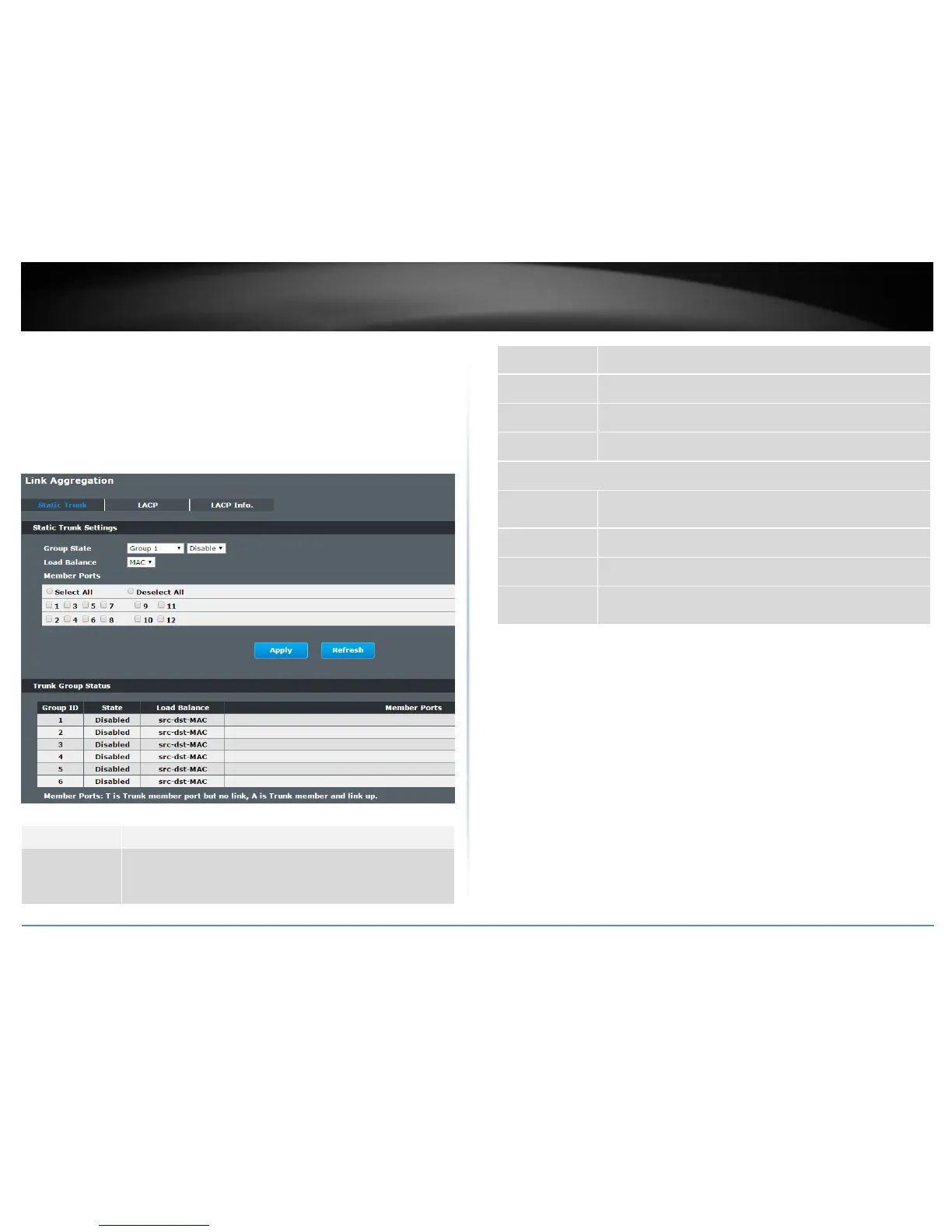© Copyright 2016 TRENDnet. All Rights Reserved.
Example:
TI-PG1284I#configure terminal
TI-PG1284I(config)#link-aggregation 1 enable
TI-PG1284I(config)#link-aggregation 1 ports 1-4
Web Configuration
Advanced Settings > Link Aggregation > Static Trunk
Select the group ID to use for this trunk group, that is, one logical
link containing multiple ports.
Select Enable to use this static trunk group.
Configures the load balance algorithm for the specific trunk group.
Select the ports to be added to the static trunk group.
Click Apply to configure the settings.
Click this to reset the fields to the last setting.
This field displays the group ID to identify a trunk group, that is,
one logical link containing multiple ports.
This field displays if the trunk group is enabled or disabled.
This field displays the load balance policy for the trunk group.
This field displays the assigned ports that comprise the static trunk
group.
LACP
The Switch adheres to the IEEE 802.3ad standard for static and dynamic (LACP) port
trunking.
The IEEE 802.3ad standard describes the Link Aggregation Control Protocol (LACP) for
dynamically creating and managing trunk groups.
When you enable LACP link aggregation on a port, the port can automatically negotiate
with the ports at the remote end of a link to establish trunk groups. LACP also allows port
redundancy, that is, if an operational port fails, then one of the “standby” ports become
operational without user intervention.
Please note that:
You must connect all ports point-to-point to the same Ethernet switch and
configure the ports for LACP trunking.
LACP only works on full-duplex links.
All ports in the same trunk group must have the same media type, speed, and

